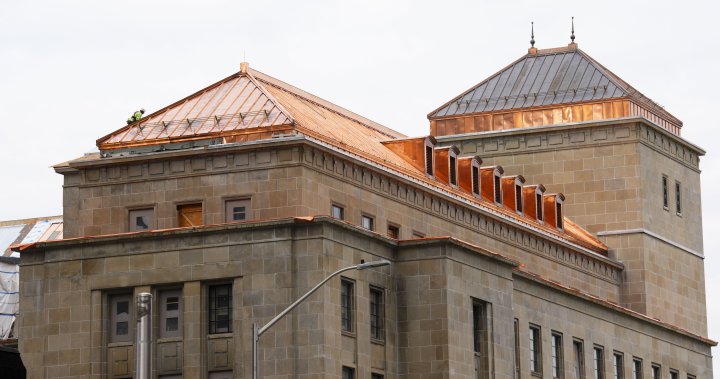The preparation of a temporary new home for the Supreme Court of Canada is three years behind schedule due to unforeseen challenges, with no firm dates for beginning or completing renovations to the top court’s permanent building on Wellington Street in Ottawa. The thorough revamp of the Supreme Court building was initially set to take place from 2023 to 2028, with the court’s judges and staff moving to the West Memorial Building across the street during the renovations. However, the West Memorial Building won’t be ready before 2026, delaying the process by three years. A budget of over $1 billion had been set aside for the renewal of both structures west of Parliament Hill.
The Public Services and Procurement Department stated that the rehabilitation of the Supreme Court building, which has not been extensively updated since its completion over 80 years ago, is currently in the planning stage. A start date for construction has yet to be determined, and as a result, there is no established date for the Supreme Court of Canada to move back in. The West Memorial Building, part of Canada’s main Second World War memorial, was constructed in the 1950s and has been vacant since 2008 due to its poor condition, including the presence of hazardous materials. The building is being refurbished to include a grand hall with a large glass and steel skylight and a unique courtroom design with angled arches to allow natural light to enter through glazed openings, similar to the existing Supreme Court building.
The renovation of the West Memorial Building began in 2020 but was not completed as expected due to delays caused by the COVID-19 pandemic and the complex nature of the project. The structure required significant redesign and remediation, with more structural beams needing reinforcement to meet current building codes. Hazardous materials needed to be removed, and mechanical and electrical components had to be redesigned. Efforts to expedite the process included simplifying redesigns and extending work hours, including weekend shifts. The anticipated move-in date for the Supreme Court to the West Memorial Building is now summer 2026, with assurances from the Court’s executive legal officer that there are no safety concerns for those working at the court.
The delays in the renovations and preparations for the Supreme Court of Canada’s temporary and permanent buildings highlight the challenges faced in completing major construction projects, especially with historical structures that require significant updates. The unexpected hurdles encountered, including pandemic-related disruptions and complex structural requirements, have contributed to the extended timeline for the completion of the renovation work. Despite the setbacks, efforts have been made to streamline the process and ensure that the buildings are safe and secure for the judges and staff who will eventually occupy them. The multi-year delay in the renovation and relocation plans underscores the need for careful planning and flexibility when undertaking large-scale construction projects, particularly for essential institutions like the Supreme Court.
The substantial budget allocated for the renewal of both the Supreme Court building and the West Memorial Building reflects the importance of preserving these historical landmarks and ensuring they meet current standards for safety and functionality. The unique architectural features of the West Memorial Building, with its grand hall and innovative courtroom design, demonstrate a commitment to honoring the building’s heritage while incorporating modern elements for improved efficiency and aesthetics. The intricate process of redesigning and refurbishing these structures involves addressing technical challenges and complying with regulations to create a space that is not only visually appealing but also functional for the Court’s operations.
As construction begins and progresses on both buildings, ongoing collaboration between the Public Services and Procurement Department and the Supreme Court will be crucial to ensuring that the renovations are completed efficiently and with minimal disruptions. The careful planning and execution of the rehabilitation work will be essential in meeting the new deadlines for the Supreme Court’s relocation and ensuring that the buildings are safe and fully operational for its judges and staff. Despite the setbacks and delays, the commitment to preserving and enhancing these historic structures remains a top priority, underscoring the significance of maintaining the integrity of Canada’s legal institutions through thoughtful and strategic renovation efforts.


